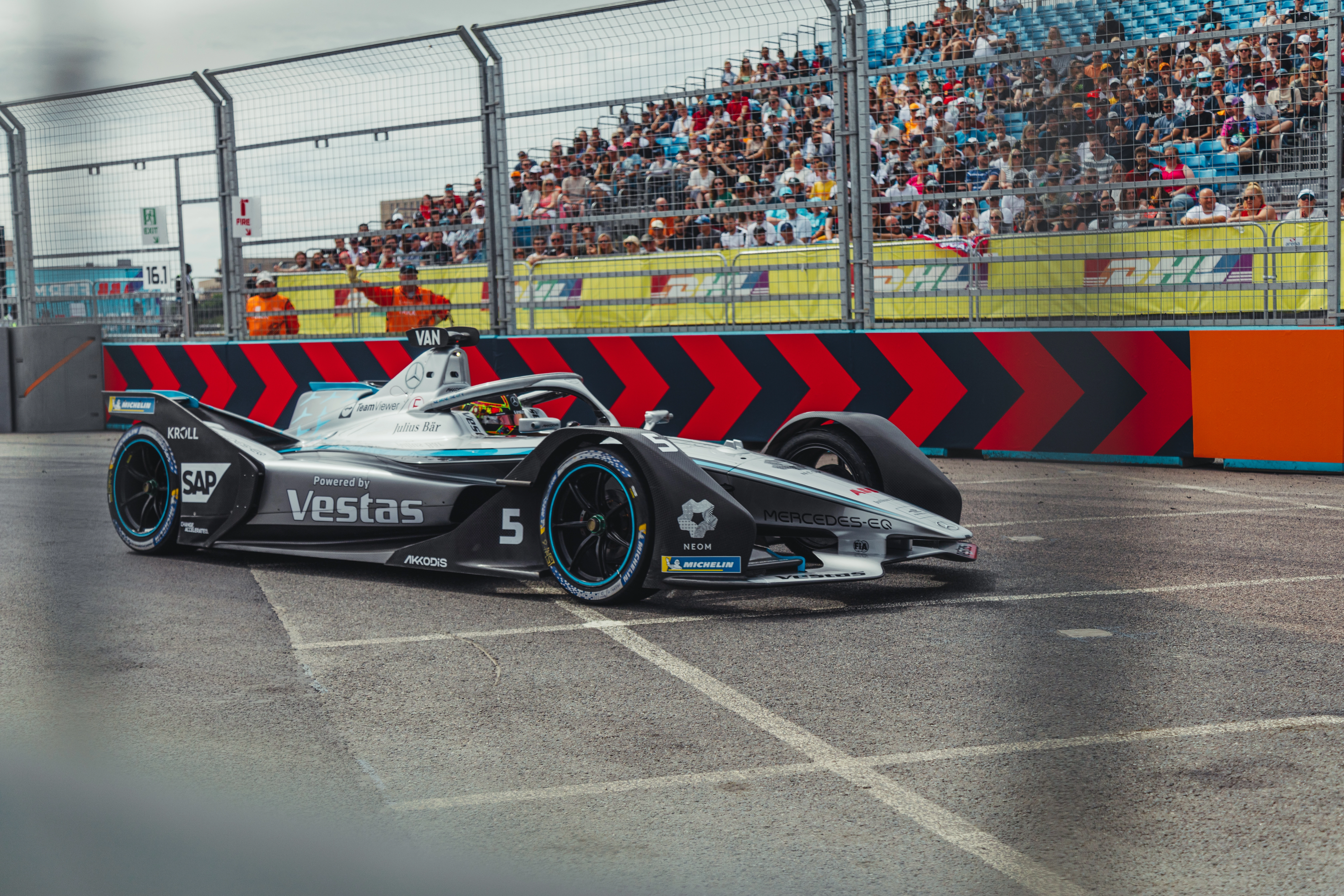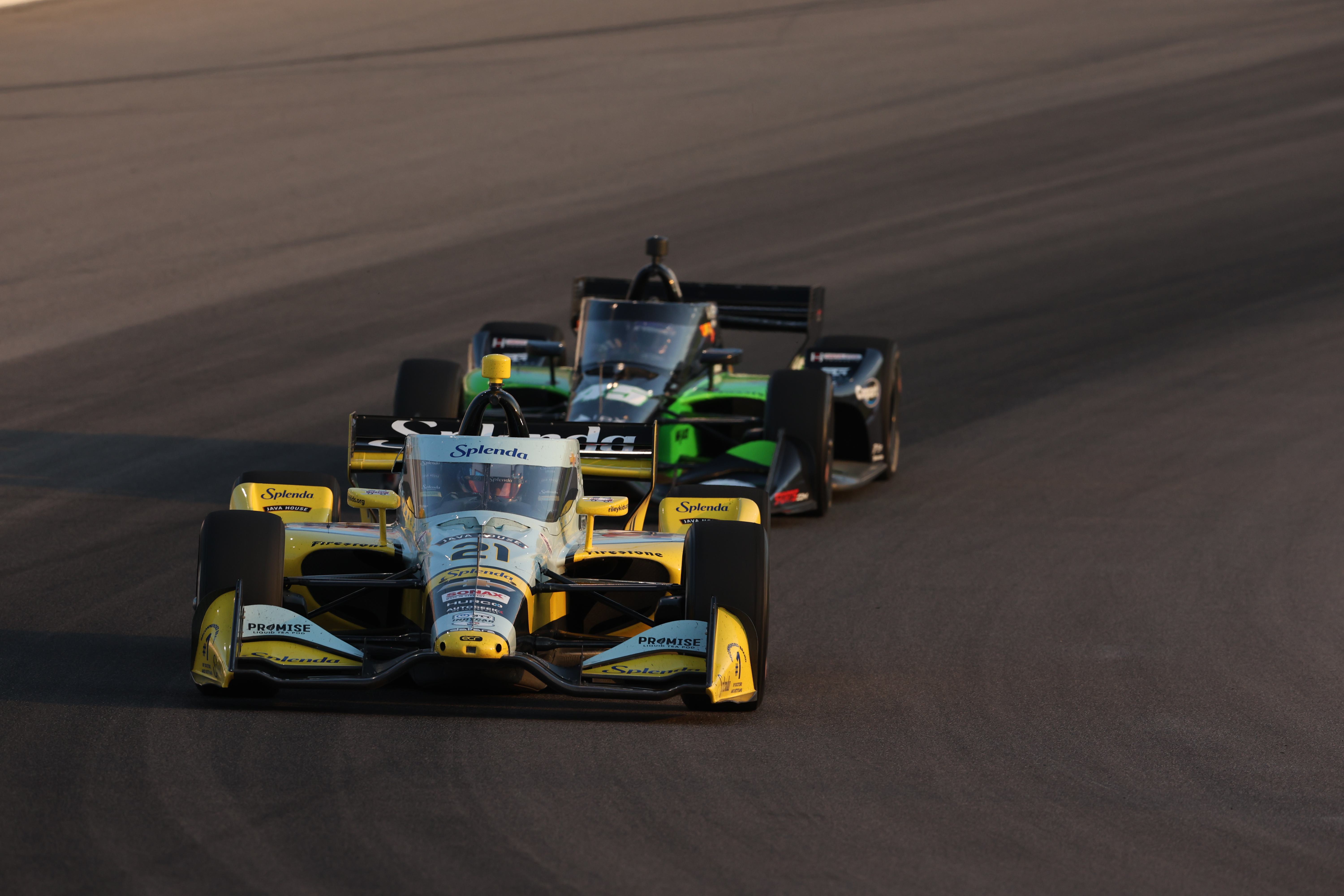IndyCar Iowa Friday Stories: High-line dramas and track change challenges
- Archie O’Reilly

- Jul 13, 2024
- 7 min read
Updated: Jan 6
Written by Archie O’Reilly
Scott McLaughlin topped the sole practice session of IndyCar’s doubleheader weekend at Iowa Speedway with a 185.891 mile per hour fastest average lap speed. This was over 9 mph quicker than teammate Josef Newgarden’s pace-setting time in opening practice last year courtesy of the partial repave of the 7/8-mile oval.
Championship leader Alex Palou was second for Chip Ganassi Racing 0.3 mph behind McLaughlin, followed by Arrow McLaren’s Pato O’Ward and David Malukas in his third race back from wrist injury with Meyer Shank Racing. Alexander Rossi rounded out the top five for Arrow McLaren.
Other notable performers were Juncos Hollinger Racing’s Agustin Canapino in seventh, one place ahead of lead rookie Linus Lundqvist in the No.8 Ganassi Honda. With Scott Dixon placing sixth, Lundqvist made it three Ganassi cars inside the top eight.
Colton Herta topped the recent test at Iowa and was the lead Andretti Global performer in ninth. Will Power, recipient of the last four poles at Iowa for Team Penske, was 10th as teammate Newgarden, who has won five of the last seven races at Iowa, placed only 15th.
Eight drivers failed to reach the 180 mph mark. Romain Grosjean did not have the same speed as Juncos teammate Canapino, with Marcus Ericsson 21st as his No.28 Andretti Honda - piloted by Grosjean last year - was the only car to make wall contact in a session punctuated by four cautions.
Dale Coyne Racing pair Jack Harvey and Katherine Legge also placed in the twenties, along with Ganassi oval rookie pair Marcus Armstrong and Kyffin Simpson. Sting Ray Robb was 12 places back from teammate Santino Ferrucci as Ed Carpenter trailed the field with a 174.134 mph quickest lap in his own No.20 Chevy.
The only practice day of the weekend, Friday at Iowa was a day of some incident and lots of discovery after some changes to the package - reduced downforce levels and softer tyres included - after the recent test…
High-line issues spark concern
One thing to emerge from the recent test at Iowa was that only one lane was fully usable on the track, resulting in drivers requesting a high-line practice session before the routine 90 minutes in order to rubber in the second lane. Without a second lane, overtaking would be challenging and drivers would struggle to find clean air.
So IndyCar opted to run two half-field 15-minute group sessions to kick off the doubleheader weekend’s track action. The top speed recorded ended up being 8 mph off the eventual all-skate lead pace and drivers were lifting at various points.
Drivers would have to have committed to further running the higher line in the 90-minute later session, though this proved a challenge, marbles built and drivers’ confidence to use the second lane appeared to diminish. When drivers ventured up in the higher groove, handling was a major challenge and grip was extremely low.
Legge brought out a caution for a half-spin after going only marginally into the second lane in an attempt to pass a slower-moving car, which was later reciprocated by McLaughlin and was almost repeated by Ferrucci earlier on too. None of those drivers ended up with damage but Dixon recommended that a further high-line session could be beneficial.
There are viable concerns about one of IndyCar’s best races being degraded as a spectacle. McLaughlin said the second lane was initially “really good” during the high line session but got “smaller and smaller and smaller” as the session progressed.
“There’s some tire deg - not as much as we’ve seen in the past,” he added. “I think that’s more track specific than tyres or whatnot. It sucks a little bit that the repave is not great for us but it is what it is. Everyone’s got the same track to deal with so see how we go.”
Drivers missing old Iowa track
The general thoughts from drivers is that the repavement in the corners has transformed Iowa into an entirely different track. The expectation was that the competitive picture may even be nigh on entirely reset.
Speaking after practice, Dixon delved into how the track has altered over the years. And while it may elevate racing elsewhere, there is a resounding sense that the repave is far from being good news for IndyCar.
“It’s definitely changed,” Dixon said. “From the first few races we had here, you just followed the white line and it was a pack race. It was kind of chaotic for a short track. We went through a good period for the last 10 years, whether it’s multi-lane, high deg… one of the best short track races that we have had.
“With the partial repave that they’ve done, it has taken away a lot of racability that we had.”
Ultimately, as much as there has been an increase in speed, even the smoothening of the track is not something necessarily welcomed by one of IndyCar’s greatest.
“I miss last year’s track,” Dixon said. “I think drivers refer to it as character. It had a lot of character. It had a lot of bumps. It was definitely hard work - qualifying was very tough. Then obviously you had the use of two, three, four lanes in the race, especially on restarts and things like that. We’ll see. I hope it gets back to that.”
A softer tyre compound brought by Firestone compared to the test may help a little compared to prior fears of no fall-off but degredation seems to remain limited, while Graham Rahal was not sold on the reduced downforce package in conversation with Peacock.
Drivers may risk more in the race but a generally one-lane track would be a disappointing downturn to the usual beautiful chaos of Iowa Speedway.
Ericsson suffers early heavy crash
Inside only 10 minutes of the main 90-minute practice session, which followed 30 minutes of high-line running, Ericsson brought out a first caution of practice with a heavy crash at Turn 4. While the Swede emerged unharmed, his rear wing was dislodged and there was significant right-side damage to his No.28 Honda.
It continued a trend of multiple crashes in the recent test - part of which prompted a 10 percent downforce reduction.
The incident sparked flashbacks to Ericsson’s Indianapolis 500 campaign, when he crashed heavily in Tun 4 on Thursday practice and saw his month derailed as a result. On this occasion, he appeared to lose the car very early in the corner before hefty wall contact ended his session.
With only one practice session before going straight into qualifying on Saturday to set the field for both races, a crash curtailing that practice time so early is potentially ruinous given limited time to work through a designated run plan and refine the car. Ericsson will have to head immediately into qualifying next time he is in the car - and a newly-repaired car at that.
An eventful minute for Canapino
Agustin Canapino brought out the third of the four cautions during the 90-minute main practice session. Much like Legge and McLaughlin, he managed to avoid wall contact. Though the driver of the No.78 Juncos Chevy did not get up too high and instead lost the car in the wheel-tracks of a slower-moving Power lower down the track.
Sixth at the time and seventh in the end, plus second in the high-line speed charts, Canapino had shown good speed. In the end, he was fortunate not to be collected by teammate Grosjean as he rolled back down the track.
As the Argentinian driver recovered into pit lane, he was involved in yet another incident as Dixon made ultimately inconsequential contact with him. The Ganassi veteran mistook Canapino for teammate Grosjean, who is placed before him in the pits, and accidentally started to turn into the wrong pit box.
There were no hard feelings between the pair as they embraced post-session.
Hybrid system debuts on an oval
The Iowa weekend marks the debut of the hybrid system on an oval. But the consensus is that it will likely be less influential than on road and street courses.
“I definitely think it’s probably not as useful on an oval as it is on a road course,” McLaughlin said. “You still have the ability to use it… we still see a difference when you deploy it in some areas. I believe people are going to use it in qualifying, people are going to use it in the race. Probably not a huge difference from a lap time perspective over 30, 40 laps.”
Speaking earlier in the week, Rahal shared a similar sentiment.
“It’s less effective,” he said. “When you think of the test, the minimum corner speeds were 180 miles an hour, which is really wild - it’s not doing much there. But come race day, different conversation, because race day when the minimum speeds really start to drop off, you’ll see a greater effect in the way that the hybrid works.
“At a place like Iowa, it’s going to be a lot to deal with because it’s taking all of your strength and everything else to hold the wheel, let alone be pulling paddles and pushing buttons and doing all of those other things. There’s some fine tuning that needs to happen on the hybrid as we go forward but I thought at Mid-Ohio it was quite effective and it worked pretty well.”
Dixon, who suffered a hybrid issue - as it was moved “into a parameter that it didn’t like” - that prevented him from taking the start at Mid-Ohio, also does not envisage the technology being a game-changer on an oval like Iowa.
“There’s not much difference,” the six-time champion said. “I think this [Iowa] is probably the lowest power dependent circuit that we go to throughout the season. You definitely feel it - it makes some differences. The amount of energy you get to use here is pretty small but it will make a difference.”
















Comments